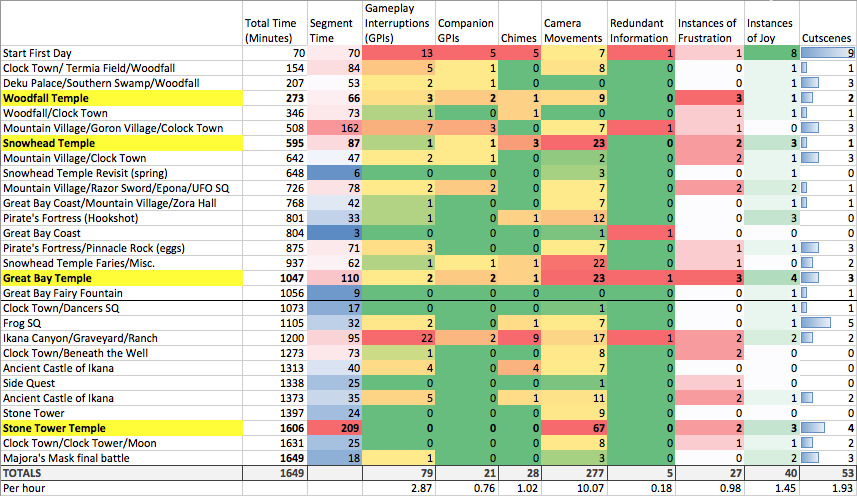Hey, Look, Listen: Analyzing Handholding in Majora’s Mask
Posted on December 29 2014 by Legacy Staff
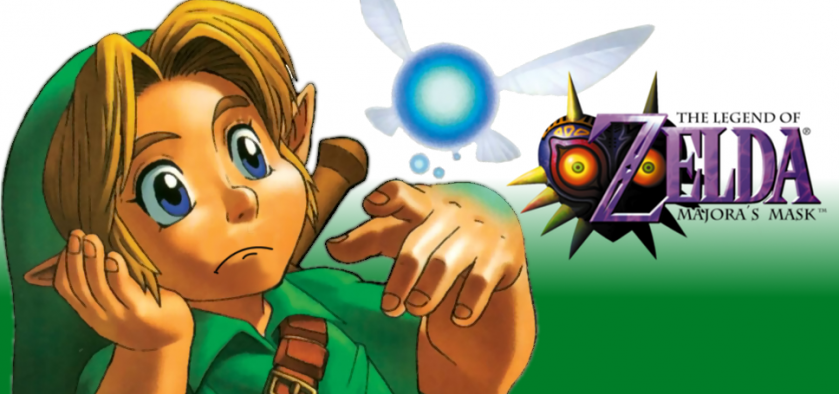
I did not enjoy Majora’s Mask.
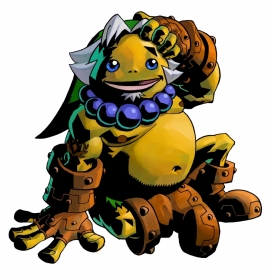 I know this is a game close to the hearts of many, but my first entire playthrough of Majora’s Mask was rarely as pleasant or rewarding as the other Zelda games I’ve played. My 27 hours and 29 minutes of play time were marred by an incompetent camera, clunky controls, dreary environments, side quests and main quests that felt tedious, an overly complicated saving process, and a lackluster central focus on masks, too many of which felt like one-trick-ponies.
I know this is a game close to the hearts of many, but my first entire playthrough of Majora’s Mask was rarely as pleasant or rewarding as the other Zelda games I’ve played. My 27 hours and 29 minutes of play time were marred by an incompetent camera, clunky controls, dreary environments, side quests and main quests that felt tedious, an overly complicated saving process, and a lackluster central focus on masks, too many of which felt like one-trick-ponies.
Perhaps many of my negative impressions of Majora’s Mask lie in the fact that my playthrough took place on a deadline. The world of Termina certainly offers plenty for players to explore and discover on their own, almost like a version of Skyrim without waypoints. I’m certain I would have enjoyed spending several afternoons figuring out how to get Anju and Kafei together in Clock Town, or tracking down more than just the dozen or so masks I ended up obtaining by the end of the game. In many ways, Majora’s Mask feels more like a game designed for players who love to leave no stone unturned rather than those eager to be drawn into a colorful world and experience an epic story, as is more frequently the case with other Zelda games.
Enough Opinions, Let’s Get to the Audit!
Despite what I may personally think of the games I play, this series is not about my impressions of Majora’s Mask, Skyward Sword, Twilight Princess, Ocarina of Time, or The Wind Waker. This series is about measuring and comparing handholding in each of these games by conducting a full playthrough of each and evaluating the data gathered along the way, and doing so as objectively as possible.
For those interested in how I measured everything or confused by the terminology I’m about to use, you can read about my methodology here. Remember that Majora’s Mask is only the second game of this audit that I have completed so far, so the only other game I have to compare it against is Skyward Sword. Some more insightful comparisons will show up in future articles of this series, and updates are now scheduled for arrival every other Sunday.
Two weeks ago, I analyzed handholding data gathered from Skyward Sword. Today, I will analyze the data on handholding gathered from Majora’s Mask — with infographics, raw data, and commentary.
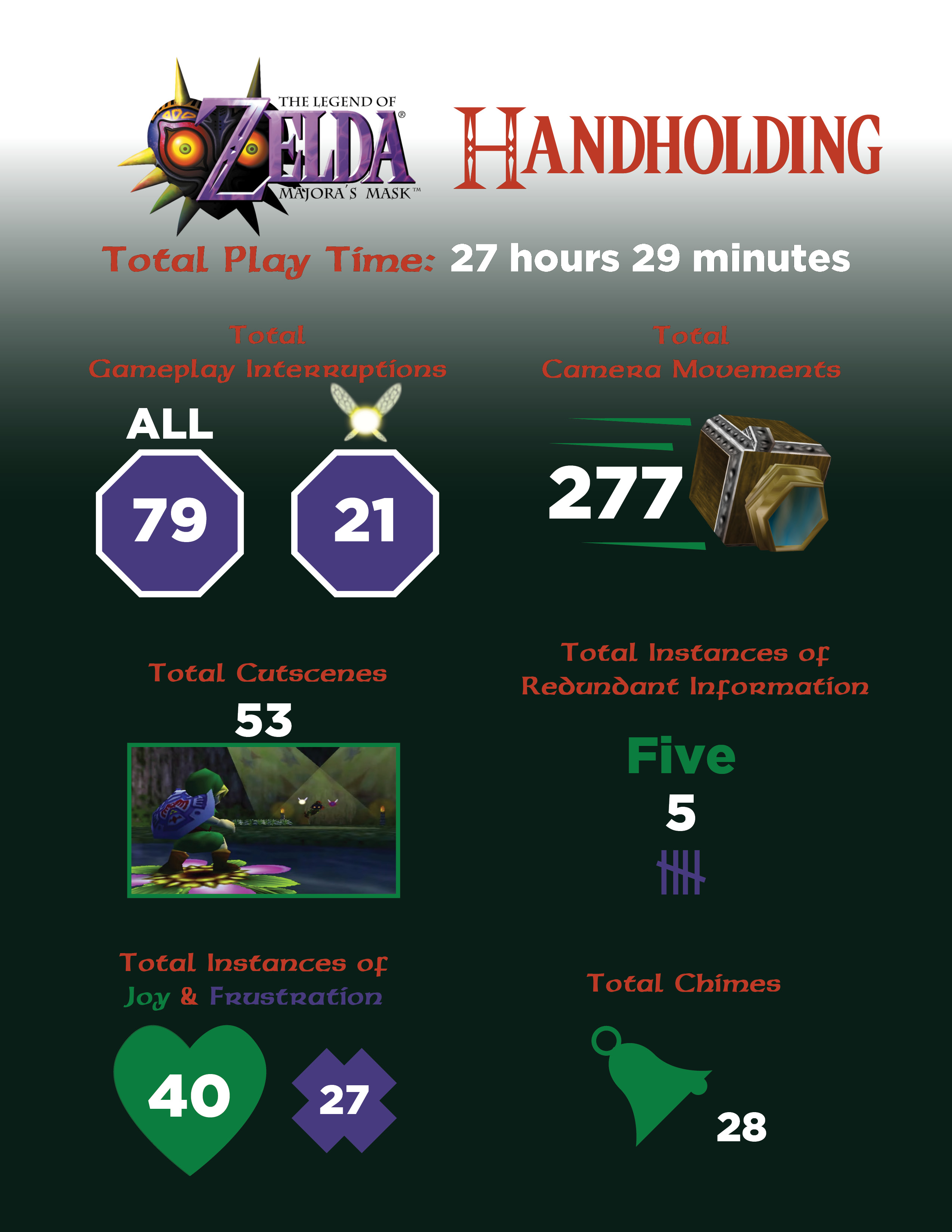
Gameplay Interruptions (GPIs) and Companion GPIs
Majora’s Mask interrupted my gameplay unexpectedly 79 times over the course of my playthrough, and 21 of those instances were caused directly by my companion Tatl. At first, 79 GPIs and 21 Companion GPIs may not seem like much, but when considering the amount of time my playthrough took, Majora’s Mask provided me with an average of 2.87 GPIs per hour and 0.76 Companion GPIs per hour, neither of which I feel are are all too different from the hourly rates observed in Skyward Sword — 3.21 and 0.97 respectively.
Of course, I cannot ignore the fact that I experienced a tremendous spike in GPIs when I reached Ikana Canyon/Ikana Graveyard. Many of these GPIs were caused by Garo Robe enemies (which I will discuss later), but this area also contained quite a few other GPIs, be they a sudden conversation with the poe Sharp, or a mysterious fellow shouting at me from the ledge of a cliff in a canyon filled with Real Bombchus.
As for Tatl, most of the GPIs she was the direct cause of happened earlier in the game, and tapered off significantly in the middle and end of the game. In fact, 76 percent of all Companion GPIs occurred in the first half of my playthrough of Majora’s Mask.
Chimes
The Chime counters for Majora’s Mask and Skyward Sword were more similar in frequency than any other counters I used for this audit. During my playthrough, I experienced 28 moments in Majora’s Mask when any part of my HUD sounded an alarm for my attention — excluding instances of low health or a flickering magic meter. This comes to 1.02 Chimes per hour, scarcely less than the 1.1 Chimes per hour in Skyward Sword. Unlike Skyward Sword, every Chime in Majora’s Mask was caused by my companion, and as with my GPI counters, I experienced an unusually high spike in them during my adventure through Ikana Canyon, largely due to encounters with Garo Robes, which I will explain here.
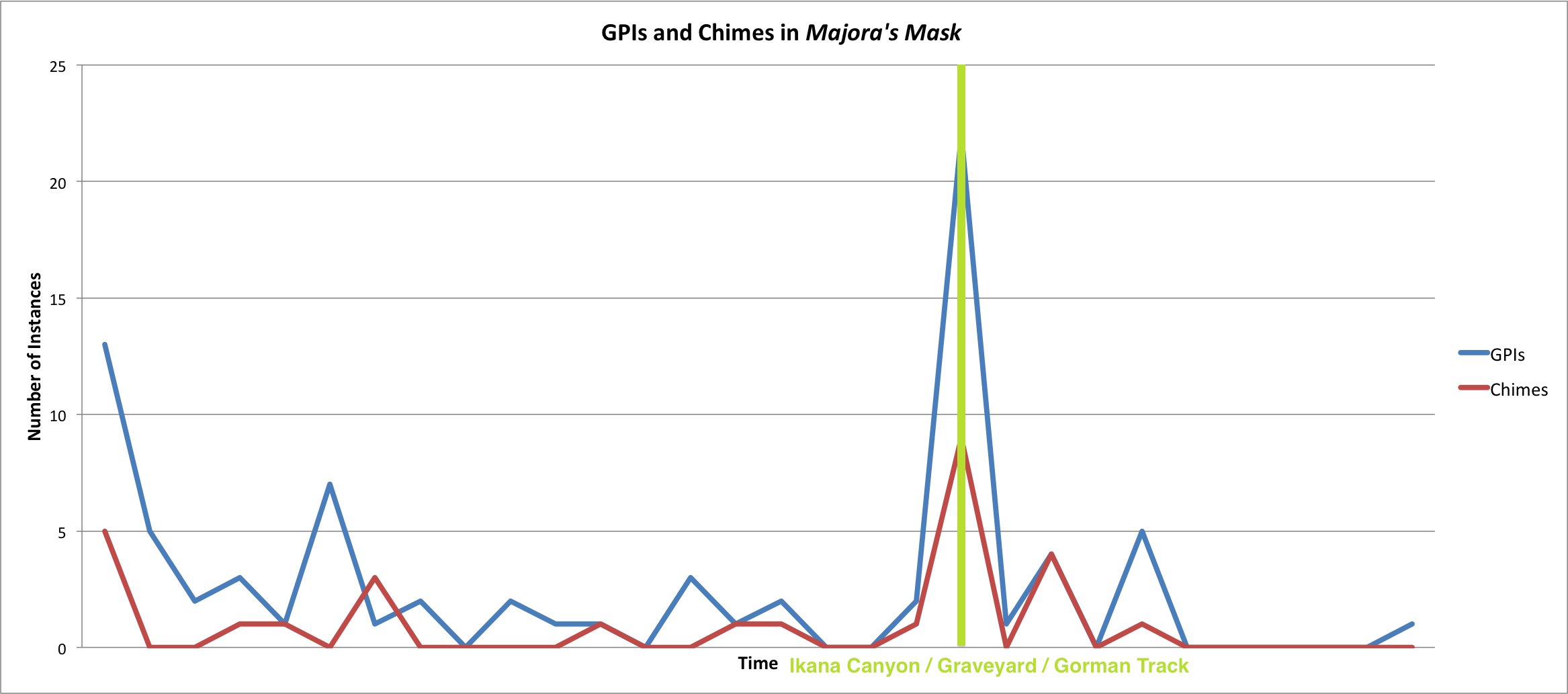 Ikana Canyon is filled with invisible zones meant to trigger encounters with Garo Robe enemies. When Link enters one of these zones, Tatl will Chime and the player may speak to her and hear about how she senses a thirst for blood, asking Link indirectly to don the Garo’s Mask. Wearing the Garo’s Mask in one of these Zones will soon trigger a GPI and a Camera Movement where player control is suspended while the camera focuses on a Garo Robe rising from the ground. Many of these Garo Robe Encounter Zones (clumsy terminology, I know) are sprinkled throughout Ikana Canyon, and since I was wearing the Garo’s Mask during my first exploration of this area, I ended up adding a tally to my GPI, Chime and Camera Movement counters every time I entered one of them.
Ikana Canyon is filled with invisible zones meant to trigger encounters with Garo Robe enemies. When Link enters one of these zones, Tatl will Chime and the player may speak to her and hear about how she senses a thirst for blood, asking Link indirectly to don the Garo’s Mask. Wearing the Garo’s Mask in one of these Zones will soon trigger a GPI and a Camera Movement where player control is suspended while the camera focuses on a Garo Robe rising from the ground. Many of these Garo Robe Encounter Zones (clumsy terminology, I know) are sprinkled throughout Ikana Canyon, and since I was wearing the Garo’s Mask during my first exploration of this area, I ended up adding a tally to my GPI, Chime and Camera Movement counters every time I entered one of them.
After a while, however, I realized that Garo Robe Encounter Zones were not one-time encounters, but would trigger every time I entered them. Not wishing to unfairly inflate my GPI, Chime and Camera Movement counters, I stopped adding to these counters when passing through Garo Robe Encounter Zones soon after I felt I had walked through all of them. I also stopped wearing the Garo’s Mask in general in this area.
Some may believe I should just make an exception for this entire region, or that I am already unfairly inflating my GPI and Camera Movement counters because those counters will only be added to if I wear the Garo’s Mask. I want to clarify that the parameters for each of my counters was established long before I even started playing Majora’s Mask, and I did not design my counters in such a way that this particular area would cause such an unusual spike in the data gathered. In fact, this was the first time I had ever played through this particular section of Majora’s Mask. Plus, the first Garo Robe GPI in particular was unexpected enough that it startled me and I jumped in my seat a bit when it happened, so I am not going to backtrack on these numbers in my final tallies.
Camera Movement
My playthrough of Majora’s Mask had more camera movements than Skyward Sword, both in absolute terms and on an hourly basis. My Majora’s Mask playthrough logged 277 Camera Movements, which is just barely over 10 every hour when averaged out. Like Skyward Sword, the majority of the Camera Movements in Majora’s Mask took place in the game’s temples, including temple-like locations such as the Pirate’s Fortress and the Ancient Caste of Ikana.
I also might be double-counting some of these instances of Camera Movements depending on how you look at things. On my first visit to Snowhead Temple, I was able to complete the temple and added 23 tallies to my Camera Movement counter along the way, but one Stray Fairy seemed completely out of my reach without the use of a Scarecrow’s Song and the Hookshot, which I had not yet acquired. When I later obtained the Hookshot, I returned to Snowhead Temple so I could obtain all the Stray Fairies, but by this point, I’d already reset the 3-day cycle twice, so I had to collect all the Stray Fairies all over again. In the process of exploring Snowhead Temple in order to collect all 15 Stray Fairies, I ended up adding 22 more tallies to the Camera Movements counter.
 For every other temple, I was able to find all 15 Stray Fairies and complete the temple in the same run. For Snowhead Temple, my inability to find out how to obtain one Stray Fairy without the Hookshot, and my desire to obtain that particular Great Fairy’s reward caused me to add what some might argue is an unfair extra 22 tallies to my Camera Movement counter for Majora’s Mask. I’m defending this tally on the basis that a desire to obtain all 15 Stray Fairies for every temple is one of the things that constitute an average playthrough of Majora’s Mask.
For every other temple, I was able to find all 15 Stray Fairies and complete the temple in the same run. For Snowhead Temple, my inability to find out how to obtain one Stray Fairy without the Hookshot, and my desire to obtain that particular Great Fairy’s reward caused me to add what some might argue is an unfair extra 22 tallies to my Camera Movement counter for Majora’s Mask. I’m defending this tally on the basis that a desire to obtain all 15 Stray Fairies for every temple is one of the things that constitute an average playthrough of Majora’s Mask.
I also encountered an astoundingly high 67 Camera Movements in Stone Tower Temple, and I feel this tremendous spike in data needs some explaining for why that number is so high. Stone Tower Temple was the only temple or dungeon of any kind in any of the games in this audit that I had never before completed. That may partially explain why the temple took me well over three hours to beat, why I had to enter and exit the temple multiple times to save my game and take a break from playing, and had to check an online walkthrough for help (I really did not want to do that, but I was stuck for over an hour on the first five rooms). Basically I spent a lot of time struggling through Stone Tower Temple, and I probably counted several instances of Camera Movement more than once.
In my defense, Stone Tower Temple itself is filled with things that trip my Camera Movements counter. In this temple, the camera repeatedly pulls away from Link to focus on doors that open when buttons are stepped on, blocks and sun icons that disappear or activate when illuminated, and entire rooms that flip around when switches are toggled with Light Arrows. Every time things like this happened, I added a tally to the Camera Movement counter, even when I was revisiting rooms either for the purpose of progression, or going back to retrieve a Stray Fairy.
The bottom line on Camera Movements in Stone Tower Temple is the temple itself is designed in such a way that the camera constantly pulls away from the player to show them something. And amazingly, none of these Camera Movements were unexpected, which is why this portion of the game added nothing to either of the GPI counters.
Redundant Information
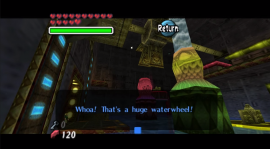 Majora’s Mask provided only five instances of Redundant Information during my playthrough. That’s not a typo. In my entire 27 hours and 29 minutes of play time with Majora’s Mask, I encountered only five (5) moments when painfully obvious information was explained to me by Tatl, or a character explained something more than once using slightly different wording. This is a substantial break from the 43 instances of Redundant Information I found in my 39 hour and 16 minute playthrough of Skyward Sword. Even when accounting for the difference in time for each playthrough, Majora’s Mask showed an astounding 84 percent decrease in the frequency of instances of Redundant Information when compared to Skyward Sword.
Majora’s Mask provided only five instances of Redundant Information during my playthrough. That’s not a typo. In my entire 27 hours and 29 minutes of play time with Majora’s Mask, I encountered only five (5) moments when painfully obvious information was explained to me by Tatl, or a character explained something more than once using slightly different wording. This is a substantial break from the 43 instances of Redundant Information I found in my 39 hour and 16 minute playthrough of Skyward Sword. Even when accounting for the difference in time for each playthrough, Majora’s Mask showed an astounding 84 percent decrease in the frequency of instances of Redundant Information when compared to Skyward Sword.
I cannot make any concrete predictions this early in my audit, but a part of me cannot help but wonder if the Redundant Information counters for Majora’s Mask or Skyward Sword will be outliers when compared to the other three games in this audit — Twilight Princess, Ocarina of Time and Wind Waker. Either way, the data clearly shows that Majora’s Mask has a remarkably low number of instances of Redundant Information, and I will be impressed if any of the other games in this audit can undercut that tally.
Frustration and Joy
As I said earlier, I didn’t enjoy my playthrough of Majora’s Mask, but I designed my coding in such a way that my personal opinion of each game either would not show in the data or would be significantly nullified. Nonetheless, the Frustration and Joy counters are still more for fun than for the purpose of objectively determining which Zelda game has the most handholding.
At any rate, I encountered 27 instances of Frustration and 40 instances of Joy during my playthrough of Majora’s Mask. While this means Majora’s Mask still provided me with more Joy than Frustration, the numbers for each counter are much closer than they were with Skyward Sword. While these counters don’t provide much insight into handholding, they definitely could help explain why some people do or don’t like Majora’s Mask, regardless of what they think of the handholding in it.
Cutscenes
My playthrough of Majora’s Mask featured 53 total cutscenes, and like Skyward Sword, most of them happened early in the game, although not as many happened late in the game as was the case with Skyward Sword. Majora’s Mask also featured almost 40 percent more cutscenes per hour than Skyward Sword, but this information comes with a few caveats.
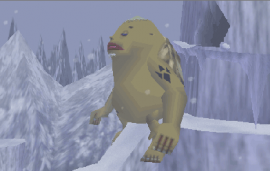 My Cutscenes counter measures the number of individual cutscenes. It does not measure cutscene length or the amount of dialogue spoken, since I concluded before the start of this audit that measuring those parameters in addition to all my other counters would quickly overwhelm me and slow the audit down. As a result, I’m going by my memories rather than hard numbers when I say that the cutscenes in Majora’s Mask felt like they had less dialogue than the ones in the exposition-heavy Skyward Sword.
My Cutscenes counter measures the number of individual cutscenes. It does not measure cutscene length or the amount of dialogue spoken, since I concluded before the start of this audit that measuring those parameters in addition to all my other counters would quickly overwhelm me and slow the audit down. As a result, I’m going by my memories rather than hard numbers when I say that the cutscenes in Majora’s Mask felt like they had less dialogue than the ones in the exposition-heavy Skyward Sword.
I should also note that a few cutscenes were counted more than once, as was rarely the case in Skyward Sword. For example, one cutscene triggered every time I entered Snowhead Temple, because entrance more often than not requires playing a song for the giant Goron blowing icy wind along the path leading there. This was a cutscene I had to see if I wanted to slip in and kill Goht to bring spring weather to the mountain, which is required for some side quests, so I had to count that cutscene more than once. All of my counters are measuring things that occur during what I consider to be a close approximation of an average playthrough; I am not counting the number of unique cutscenes in the game, as that would require a 100% playthrough, which is not something this audit is analyzing.
Other Handholding Factors — Important Things I Couldn’t Count
One thing Tatl does in Majora’s Mask that Fi never did in Skyward Sword is passively flying near enemies and points of interest where she would hover over them until I turned the camera away or moved out of range. I called this behavior Highlighting, and for some, this can very much feel like handholding, so I will explain a few things about it here.
 I did not keep a counter for Highlighting primarily because of the difficulty involved in keeping track of instances of it. I did attempt to keep track of Highlighting when I was in Mountain Village, but quickly stopped after I racked up nine tallies for the counter in just half an hour. While this was only a sample, it only served to enforce my belief that Highlighting is something that happens a tremendous amount in Majora’s Mask, and keeping track of it would have been so tedious that it would have been detrimental to the completion of this entire audit.
I did not keep a counter for Highlighting primarily because of the difficulty involved in keeping track of instances of it. I did attempt to keep track of Highlighting when I was in Mountain Village, but quickly stopped after I racked up nine tallies for the counter in just half an hour. While this was only a sample, it only served to enforce my belief that Highlighting is something that happens a tremendous amount in Majora’s Mask, and keeping track of it would have been so tedious that it would have been detrimental to the completion of this entire audit.
Even if I don’t count respawning enemies, for a Highlighting counter, I would have to add a tally every time Link simply walked past an Owl Statue, a sign, a person, a Scarecrow location, or any one of the many other things Tatl is prone to Highlight. And sometimes this fast-moving fairy might escape my gaze, like when she rushes up to Highlight an icicle dangling from the ceiling in Snowhead Temple. Basically, the potential for missing or double-counting instances of Highlighting by Tatl were so high that I decided not to count this behavior at all for Majora’s Mask, nor will I count it when Navi exhibits a very similar behavior in Ocarina of Time.
However… that does not mean I am excluding the Highlighting behavior of Tatl and Navi from this audit altogether. After all, I can think of few things that exemplify handholding in a video game better than Highlighting in Majora’s Mask and Ocarina of Time. Each of these games equip the player with a flying orb of light that passively zips around the environment to illuminate things the player can or should interact with or fight. Navi and Tatl Highlight enemy weak points and switches that might have otherwise been unnoticed, all of which subtly but persistently and very effectively guides players through combat, solving puzzles and exploration. I believe I’m very safe in my assertion that without Highlighting, Ocarina of Time and Majora’s Mask would be much more challenging games.
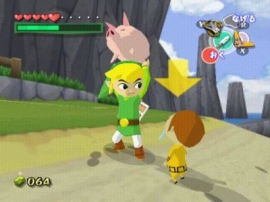 All the Zelda games in this audit have mechanics in place for drawing the player’s attention to points of interest. However, Wind Waker did away with flying fairy companions to Highlight points of interest and instead introduced a mechanic where Link himself passively turns his head to gaze either in anger or curiosity at enemies and points of interest. This Head-turning mechanic reappeared in Twilight Princess and Skyward Sword, and I’ll be surprised if it does not show up in Zelda U as well. In fact, Wind Waker, Twilight Princess and Skyward Sword all provide small arrows that hover over enemies, people and some points of interest in addition to the head-turning mechanic, and more often than not these hovering arrows become much larger when Z or L-targeting is engaged.
All the Zelda games in this audit have mechanics in place for drawing the player’s attention to points of interest. However, Wind Waker did away with flying fairy companions to Highlight points of interest and instead introduced a mechanic where Link himself passively turns his head to gaze either in anger or curiosity at enemies and points of interest. This Head-turning mechanic reappeared in Twilight Princess and Skyward Sword, and I’ll be surprised if it does not show up in Zelda U as well. In fact, Wind Waker, Twilight Princess and Skyward Sword all provide small arrows that hover over enemies, people and some points of interest in addition to the head-turning mechanic, and more often than not these hovering arrows become much larger when Z or L-targeting is engaged.
Ultimately, Highlighting and related mechanics in Wind Waker, Twilight Princess, and Skyward Sword are a huge topic that may very well warrant its own audit one day. Everything I have discussed in the last five paragraphs are very pertinent to the discussion of handholding in the Zelda games I have selected for this audit, but the topic is ultimately too big for this audit alone. As a result, I am simply going to continue with this audit without measuring Highlighting or other related mechanics in any meaningful way, but I will not ignore them during my final evaluation when I determine which of these games has the most or least handholding. For now, I’m going to move forward with the assertion that a glowing ball of light flying around the player’s environment to Highlight things is a much stronger form of handholding than a turning head and small hovering arrows.
What’s Next?
Once again keeping with my decision to audit each of these games completely out of order, the next Zelda game I will analyze handholding for is Twilight Princess, which I’ve already started collecting data on. Future updates on this series will occur every other Sunday from here on out, so expect an analysis of handholding in Twilight Princess in two weeks.
Full Spreadsheet of Majora’s Mask Playthrough Data — More Charts in Gallery
